Popular games published by company U.S. Gold
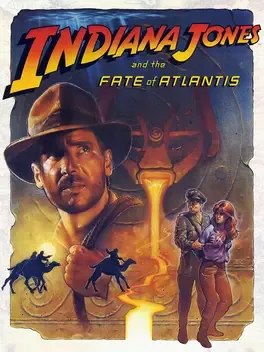
A point-and-click adventure game by LucasArts originally released in 1992. Almost a year later, it was reissued on CD-ROM as an enhanced "talkie" edition with full voice acting and digitized sound effects. In 2009, this version was also released as an unlockable extra of the Wii action game Indiana Jones and the Staff of Kings, and as a digitally distributed Steam title. The seventh game to use the script language SCUMM, Fate of Atlantis has the player explore environments and interact with objects and characters by using commands constructed with predetermined verbs. It features three unique paths to select, influencing story development, gameplay and puzzles.
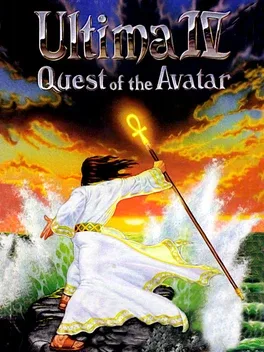
Following the defeat of the evil triad in the previous three Ultima games, the world of Sosaria changed beyond recognition: continents rose and sank, and new cities were built, heralding the advent of a different civilization. Unified by the reign of the benevolent monarch Lord British, the new world was renamed Britannia. Lord British wished to base people's well-being on the ethical principles of Truth, Love, and Courage, proclaiming the Eight Virtues (Honesty, Compassion, Valor, Justice, Sacrifice, Honor, Spirituality, and Humility) as the ideal everyone should strive for. The person who could accomplish full understanding and realization of these virtues would serve as a spiritual leader and a moral example for the inhabitants of Britannia; he alone would be able to obtain holy artifacts, descend into the Stygian Abyss, and access the Codex of Ultimate Wisdom. This person is the Avatar. The fourth game in the Ultima series features an improved game engine, with color graphics and enhanced character interaction: the player can have conversations with non-playable characters by typing names of various topics. However, the main difference between Ultima IV and its predecessors in the series (as well as other role-playing games) lies in the game's objectives and the ways to fulfill them. Instead of building up a character by any means possible in order to face a villain in the end of the game, in Ultima IV the player is trying to become the Avatar, a role model for people. This means upholding the Eight Virtues, basically trying to become a better person. Making morally conscious decisions and helping other people is not done expecting a material reward, but because it is the actual goal of the game and the main focus of its gameplay. The game frowns on behavior typical of most other RPGs, such as backstabbing fleeing enemies or picking up everything that isn't nailed down even if it does not belong to the protagonist. This different approach established the game's reputation as the first "true" Ultima, influencing the design philosophy of later installments and the overall spirit of the series. Character creation is done by choosing responses to morally ambiguous questions. Each of the Eight Virtues corresponds to a character class; by determining the player's personal priorities in the virtues, the game assigns a class and a starting location for the Avatar. After emerging in Britannia, the player is free to explore it in various ways (on foot, moongate teleportation, on horseback, by ship, etc.). Certain items must be collected in any order to enter the Stygian Abyss and complete the game. The Avatar also has to reach the highest level in all virtues. This is achieved by various means: donating blood increases Sacrifice, not fleeing from combat increases Valor, etc. The process, however, is not irreversible: should the Avatar overpay a blind seller, he gains Compassion points; should he, on the other hand, cheat the seller by underpaying, his level in several virtues would decrease. These unorthodox features of the game co-exist with plenty of traditional RPG elements, such as dungeons to explore and hostile monsters to kill. Enemies are encountered on the world map as well as in dungeons; combat takes place on separate top-down screens, allowing player-controlled and enemy parties freely move on them. Characters accumulate experience points and level up, gaining higher amount of hit points and access to stronger magic spells. Like in the previous installments of the series, world map, town exploration and combat are presented from a top-down view, while the dungeons are pseudo-3D and are explored from first-person perspective. Ultima IV also introduces several new gameplay features to the series and role-playing games in general. A number of initially non-playable characters living in various areas of the game world are able to to join the party and fight alongside the hero, replacing traditional player-generated characters or mercenaries and adventurers available only in special locations. Additional new elements include buying and combining reagents in order to cast spells, puzzle rooms in dungeons, and others. The FM Towns version, while identical to the others in gameplay, introduces upgraded graphics similar to those used in next installment of the series.

Bruce Lee is a video game designed by Ron J. Fortier, with graphics by Kelly Day and music by John A. Fitzpatrick. It was originally developed for the Atari 8-bit family and published in 1984 by Datasoft, along with a port for the Commodore 64. The game was converted to the ZX Spectrum and Amstrad CPC and published by U.S. Gold in the same year. An MSX version was published in 1985 by Comptiq. Bruce Lee is a platform game/beat 'em up hybrid, in which the player controls Bruce Lee.

Out of This World (Another World in Europe) is a cinematic platformer that uses vector-based graphics and rotoscoped animations to deliver a minimalistic yet expressive visual style. It features a combination of action, platforming, and puzzle-solving mechanics, with a deliberate lack of HUD and textual guidance. Gameplay emphasizes trial-and-error, timing, and exploration, with a limited checkpoint system. In 2005, a homebrew port of the Atari ST version was released for the Game Boy Advance, officially allowed by Éric Chahi to be published with the original assets.

Throughout the 20th century, an unprecedented political and economic crisis afflicted Earth, leading to the systematic disabling of it's programme to conquer outer space through lack of funding. The highest priority now was to carryout research into new energy sources, preservation of the enviro- ment and maintenance of the cultural heritage. However, at the dawn of the 21st century, provision of considerable funds from an unknown source released by the politicians of the new, unified government, permitted a return to the space research programme. The conquest began gradually with the construction of huge, manned artificial satellites. Several lunar bases were created with the view to becoming future Earth colonies within the solar system. The considerable advancements made together with the supply of increasingly greater sums of money allowed man to explore, even as far as the planet Titan. You play the part of Conrad Hart, controlling his every move through the 6 levels of the game. During your quest, you will come across many different friends and foes whom you may wish to help or vanquish using your gun. you will have to complete many challenges in order to restore your lost memory. Each level features its own unique graphics and hazards, linked by cinematic animation sequences.
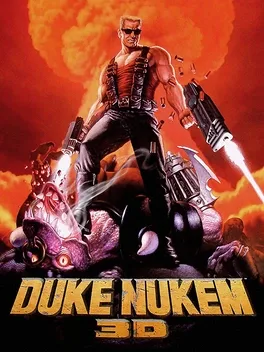
Aliens have landed in futuristic Los Angeles and it's up to the Duke to bring the pain and show them the door. After the initial entries of side-scrolling platform games, Duke Nukem 3D introduces a first-person perspective to the series and turns the game into a full-fledged shooter with 2.5D graphics. Duke's arsenal includes pistols, pipe bombs, laser trip mines, Nordenfelt guns, a chain gun and various rocket launchers, but also his mighty foot to kick enemies. The game sports a high level of interactivity. Many objects in the environment can be broken or interacted with, such as pool tables, arcade machines, glass, light switches and security cameras. The protagonist is also able to hand strippers a dollars to have them remove their top.
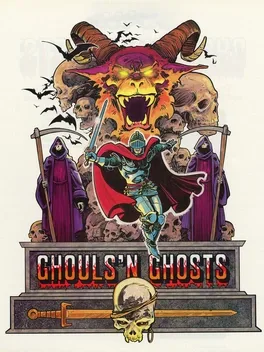
The gameplay for Ghouls 'n Ghosts is similar to that of Ghosts 'n Goblins. The player controls the knight Arthur, who must advance through a series of eerie levels and defeat a number of undead and demonic creatures in his quest to restore the souls stolen by Lucifer (Loki in the English-language Mega Drive and Sega Master System versions), including the soul of his lover, Princess Prin Prin. Along the way, Arthur can pick up a variety of weapons and armor to help him in his quest. While the core gameplay remains the same as its predecessor, the game now allows Arthur to fire directly upward and directly downward while in mid air. By jumping in certain spots, players can cause a treasure chest to erupt from the ground. By firing his weapon at the chest, players may uncover new weapons, gold armor or an evil magician that changes Arthur into an elderly man or a helpless duck. The gold armor allows players to charge up the weapon to release a powerful magical attack. Each weapon has its own special attack. There are five levels and Lucifer's chamber at the end, considered a sixth level in itself. To defeat the game, Arthur must complete level 1 to 5 twice. Upon completing level's 1 to 5 the first time, Arthur is taken back to level 1 again but this time a special weapon appears during the game. To enter Lucifer's chamber the player must have this special weapon equipped and defeat the penultimate boss.
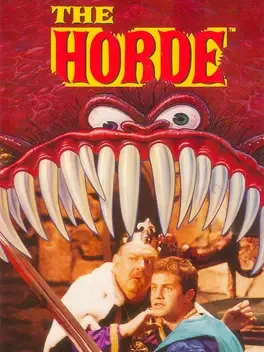
The Horde is a hybrid action-strategy video game that was originally released for 3DO and was ported to the Sega Saturn and DOS. It also featured full-motion video sequences featuring a number of actors including Kirk Cameron as Chauncey and Michael Gregory as Kronus Maelor. Video sequences were reduced to slide shows (with full sound) in some versions. The game was bundled with the RealMagic MPEG playback card as a demonstration of the card's abilities to play back full-motion MPEG video via the card's hardware decoder, at the time software MPEG decoding was not viable due to the lack of processing power in contemporary processors. The music was composed by Burke Trieschmann and won Computer Gaming World's Premiere Award for Best Musical Score in 1994.
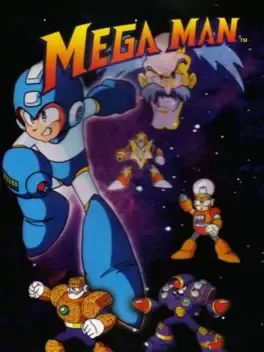
It's MEGA MAN versus the powerful leaders and fighting forces of Monsteropolis - that strange multi-layered land of robot-like humanoids created by the wrongly-performed experiments with human beings by Dr. Wily. Mega Man - the chosen defender of the human race. For he dares to single-handedly penetrate Monsteropolis' seven separate societies to stop the rapid expansion of strange misrepresentations of humans. Mega Man's goal is monumental. He must infiltrate seven separate heavily-guarded empires. By himself, he must break down and destroy the following empire leaders: Cutman, Gutsman, Iceman, Bombman, Fireman, Elecman, and Dr. Wily. The action involves Mega Man armed only with laser beam weapons, encountering strangely-configured humanoids. They're atop, in and out of fortified prison-like structures strengthened with thick walls. Hidden amid gun turrets embedded in concrete uprights, even in subterranean passages below icefields. WOW!
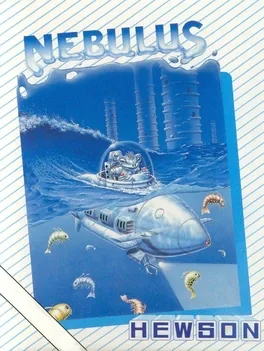
You play a small green guy who needs to blow up eight towers, because their presence is somehow poisoning the water of planets which could potentially be ideal colonies. Unfortunately you need to get to the top of these towers to blow them up. You make your way up to the top of the tower via walkways around the outside of the towers. You need to jump over, kick, and run from various enemies in your journey to the top. Most vertical movement is achieved by jumping onto moving ledges at the right moment. The game was considered revolutionary in its time for its graphic technique. As the main character walked around the outside of the tower, the character was fixed in the middle of the screen while the tower itself rotated. This gave it a pseudo-3D effect. Towers are linked together via a voyage through the sea in your trusty MK.7 submarine. This plays out as a side-scrolling collect-'em-up in which bonus points can be obtained.
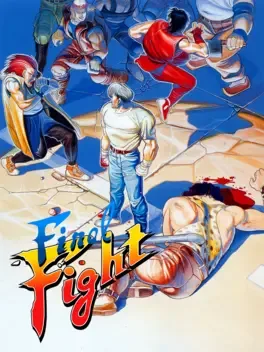
Final Fight is a side-scrolling beat-'em-up produced by Capcom. Final Fight can be played by up to two players simultaneously. Before the game begins, the player chooses between the three main characters: Haggar, Cody, and Guy. Each has his own fighting style and attributes. Health gauges are displayed for both player and enemy characters. The controls for Final Fight consist of an eight-way joystick and two buttons for attacking and jumping respectively. Pressing the attack button repeatedly when attacking an enemy or multiple enemies will cause the player character to perform a combo. The final blow of the combo can be changed to a throw if the player moves the joystick in the opposite direction just before landing it. The player can also perform a jump attack. Pressing the attack and jump buttons simultaneously allows the player to perform a special attack that strikes all surrounding enemies, but will drain a small portion of the player's health. Enemies can be grabbed simply by walking into one of them. When an enemy is grabbed, the player can perform a grab attack by pressing the attack button or perform a throw by tilting the joystick left or right. A thrown enemy can be tossed at another for additional damage. Items such as weapons, health recovery items, and items awarding extra points can be picked up by standing over one and pressing the attack button. Weapons have limited uses and will disappear if the player is disarmed by an enemy too much or when the player moves to a new area. Final Fight consists of six stages or "rounds", as well as two bonus rounds. Each round takes place in a different section of Metro City such as the Slums and the Subway, with most rounds featuring more than one level. At the end of each round the player will face a boss character unique to that round.
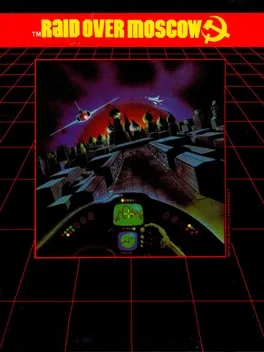
Released during the Cold War era, Raid Over Moscow is an action game in which the player (an American space pilot) has to stop three Soviet nuclear attacks on North America, then fight his way into and destroy a nuclear facility located in Moscow's Kremlin. According to the game's storyline, the United States is unable to respond to the attack directly due to the dismantlement of its nuclear arsenal.
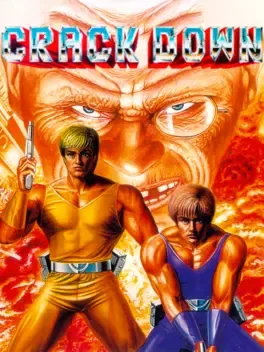
Ben and Andy, the two top Special Service agents have accepted a very dangerous assignment – the elimination of Mr.K and his Artificial Life System. Mr. K plans to rid the earth of human life forms using the killer robots he’s created, and no one but Ben and Andy can stop him!
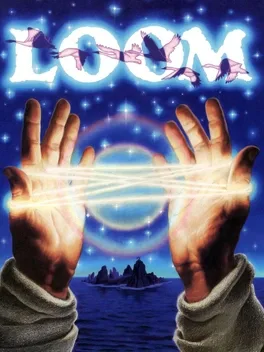
Long after the passing of the Second Shadow, when dragons ruled the twilight sky and the stars were bright and numerous, came the Age of the Great Guilds. Blacksmiths. Shepherds. Clerics. Each dedicated to the absolute control of secret knowledge. Another such Guild was the Weavers. Over the centuries, their craft transcended the limits of physical cloth, until they wove the very fabric of reality itself. Now, a strange power has swept the Weavers into oblivion, leaving behind one Weaver boy to unravel the mystery. Help young Bobbin rescue his Guild...and you just might save the universe from an unspeakable catastrophe.
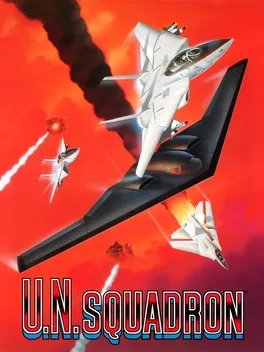
Side-scrolling shoot-em-up, in a similar style to such games as Gradius, R-Type and Scramble. The aim is to wipe out the enemy, which has gathered around the allied airspace of 'Area 88', in a series of military aircraft-based scenarios. You choose one of three unique pilots; Shin Kazama, Micky Schymon or Greg Gates, each with varying abilities at damage repair, weapon handling and flying skill, and engage the enemy over a series of challenging missions. The player starts out with the weakest plane, the F8E Crusader, which can only be armed with a very basic range weapons. But, through completing various missions, enough cash can be raised to purchase higher-quality aircraft. These superior planes are more agile, have improved resilience to damage and have a greater range of fire. Furthermore, the more advanced fighters can be armed with superior special weapons, such as napalm. The missions include attacks on sand bases, the nuclear submarine 'Seavet' and enemy supply camps, as well as seeing off groups of airborne 'bandits' who swarm-in on Area 88. The enemy is plentiful, and the pace is frantic. Shoot at everything on the screen that moves, and the allied forces might just come out on top......
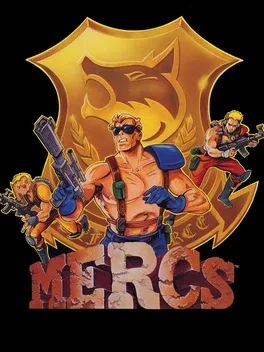
The players are members of a covert counter-terrorist team of mercenaries known as the "Wolf Force". The aim of the game was to rescue the former President from rebels in the fictional African country of Zutula, which bears resemblance to the apartheid regime in South Africa. The game has six main levels, plus the final level where your mission is to rescue the former U.S. president from the Hercules Transport. The game's arsenal include real-world machine guns, shot guns, flame throwers, and grenade launchers. Several missions even have pilotable vehicles available.
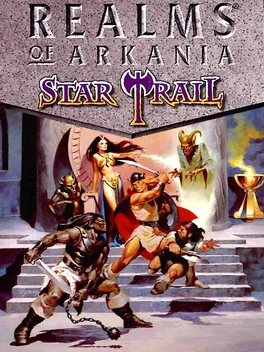
Welcome to the world of Arkania from the same company responsible for the Ultima titles, Sir-tech Software, Inc.. You and a party of adventurers have the fate of the kingdom squarely on your collective shoulders in this role-playing excursion into a fantasy-based realm filled with a powerful army of Orcs aiming to devastate Arkania.
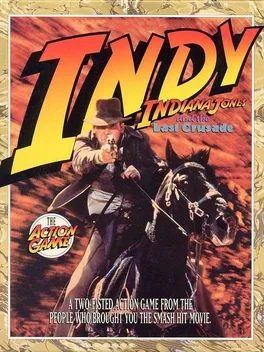
Indiana Jones and the Last Crusade: The Action Game is a side-scrolling action title based on the 1989 film of the same name. Players control Indiana Jones through various levels that loosely follow the movie’s plot, including iconic locations like the catacombs and the Zeppelin. Gameplay focuses on platforming, basic combat, and item collection, with limited lives and high difficulty. The graphics and sound vary across platforms, with the Amiga and Atari ST versions generally offering the most polished presentation.
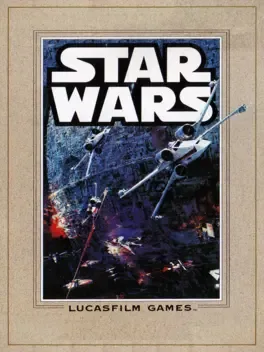
This game is based entirely on the first Star Wars movie, Episode IV: A New Hope. The opening of the game features an animated cinematic of the opening scene of the film. After that the player takes control of Luke Skywalker, driving the landspeeder across Tatooine in search of R2-D2. Luke Skywalker explores various locations throughout Tatooine, fighting numerous enemies including Jawas and Stormtroopers. The game features many locations from the movie including the Chalmun's Cantina in Mos Eisley where Luke meets Han Solo for the first time. This section of the game features a classic 8-bit rendition of the "Cantina Band" theme as played by the fictitious band, Figrin D'an and the Modal Nodes, in the feature film. The game also contains many famous lines from the movie including Obi-Wan Kenobi's plea to Luke to join him in his trip to Alderann and Han Solo's description of the smell from the Death Star's trash compactor. The player eventually lands on the Death Star and has to destroy the tractor beam to escape. The game also features first person segments of piloting the Millenium Falcon through that Asteroid field that was once Alderaan, and shooting down Tie Fighters in both the Millenium Falcon and an X-Wing fighter. The finale of the game features a top down view of Luke Skywalker's X-Wing flying through the Death Star trenches. After the player successfully fires a torpedo into the Death Star's exposed exhaust port, a cinematic of the Death Star exploding and Luke Skywalker being awarded a medal on Yavin IV is shown. The game featured the characters Luke Skywalker, Han Solo, Obi-Wan Kenobi, Princess Leia, R2-D2, and C-3PO. The game however does not feature Darth Vader or Chewbacca, both of whom are major characters in the film.
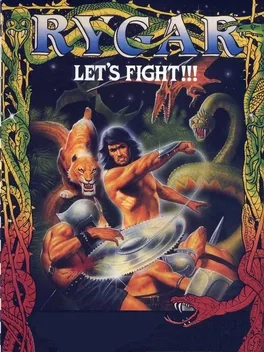
An evil being known as Ligar is about to conquer the land of Argool. Such is his power that no living creature dares to cross paths with him. But the legendary warrior Rygar rises from his grave to restore peace and justice. Armed with his famed weapon Diskarmor, Rygar begins to traverse the vast lands that lead to the lair of the demon, as his minions are trying in vain to stop him...
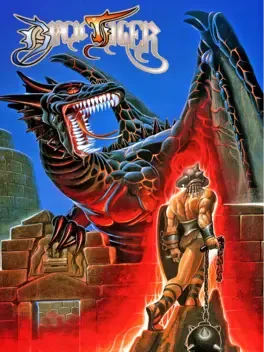
Black Tiger, known in Japan as Black Dragon, is a 1987 action game released for the arcades by Capcom. A barbarian hero jumps and fights his way through a variety of colourful, enemy-packed levels. The sprawling, eight-way scrolling, two-dimensional levels are packed with hidden bonuses to encourage and reward exploration. Though a percentage of these bonuses consist of dubious and often self-evident "advice", most come in the form of "Zenny coins", currency that allows the player to buy such items as an upgrade to their weapons and armour, keys for treasure chests, and anti-poisoning potions. Special items that reveal coins, upgraded armour, full vitality, extra lives, extra time, or simply bonus points may be found by attacking certain walls. The player's vitality bar will also increase up to three times as a reward for reaching score benchmarks.

Pitstop II is the first 3D racing game to implement a split-screen simultaneous two-player game mode. Players could be in completely different places on the racing track, and each split screen would show the view of the track according to the player's position.
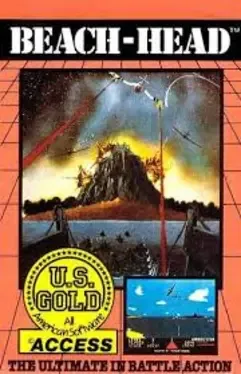
The first game in the Beach Head series, the game depicts the player's violent war effort to end a dictator's reign
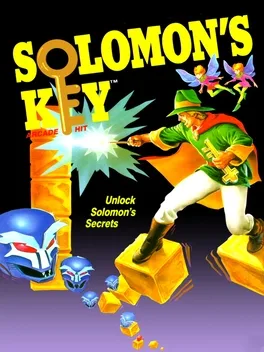
Solomon's Key is a puzzle game developed by Tecmo in 1986 for arcade release on custom hardware based on the Z80 chipset. The game is generally recognized as one of the most difficult games to appear on the NES. The player, controlling a sorcerer known only as Dana must overcome unlimited enemy spawning, challenging level designs, a countdown timer, instant death from any physical contact with enemies, and limited ways to dispatch enemies.